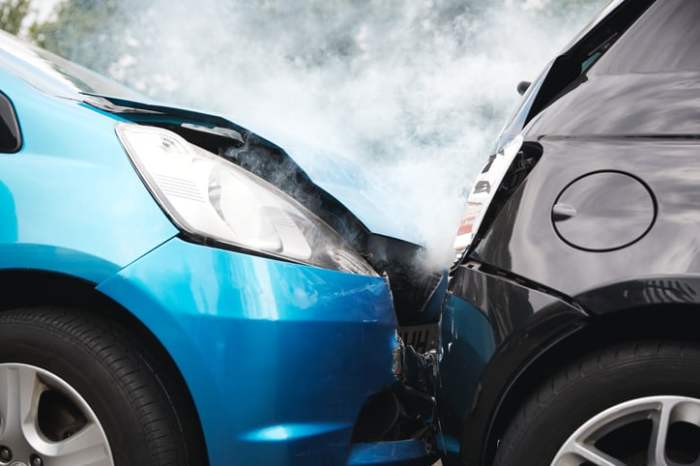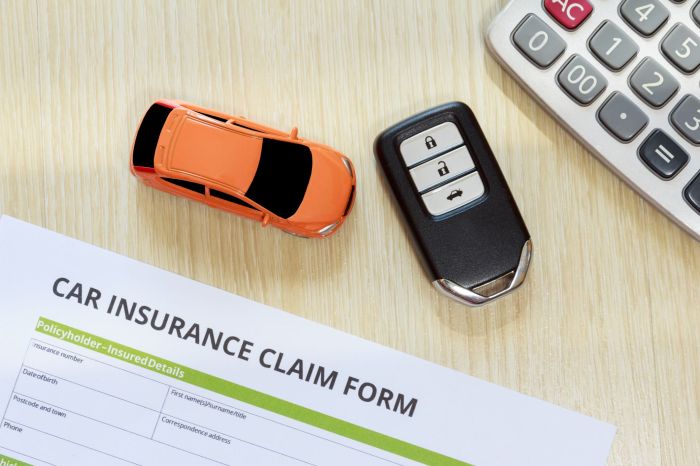Car accidents and unexpected vehicle damage are unfortunately common occurrences. Understanding the intricacies of car insurance claims can significantly impact your financial well-being and peace of mind following such events. This guide delves into the process, from initial claim filing to resolving disputes, offering practical advice and insights to help you navigate this often complex landscape.
We’ll explore various claim types, the necessary documentation, and the factors influencing settlement amounts. We’ll also provide strategies for effective communication with insurance adjusters and offer solutions for resolving disagreements. Ultimately, our aim is to empower you with the knowledge needed to confidently handle your car insurance claims.
Factors Affecting Claim Settlements

The amount you receive from a car insurance claim isn’t always straightforward. Several factors interact to determine the final payout, impacting the overall settlement process. Understanding these factors can help you navigate the claims process more effectively and ensure a fair settlement.
Several key elements significantly influence the final claim settlement amount. These range from the specifics of your policy and the damage assessment to the insurance company’s claims handling practices.
Pre-existing Damage
Pre-existing damage to your vehicle can significantly reduce the amount paid out on a claim. Insurance companies typically only cover damage resulting from the covered accident. If damage existed prior to the accident, the insurer will likely deduct the cost of repairing that pre-existing damage from the overall settlement. For example, if you had a minor dent before an accident and the accident caused further damage, the insurer might only cover the additional damage caused by the accident, leaving you responsible for the pre-existing dent repair. Thorough documentation of your vehicle’s condition before the accident, such as photographs or a pre-accident appraisal, can be crucial in supporting your claim and avoiding disputes.
Policy Limits
Your policy’s coverage limits directly impact the maximum amount the insurance company will pay out. These limits are specified in your policy document and vary depending on the type of coverage (collision, comprehensive, liability, etc.) and the level of coverage you selected. If the cost of repairs or medical expenses exceeds your policy limits, you will be responsible for the remaining amount. For instance, if your collision coverage has a limit of $10,000 and the repairs cost $12,000, you would have to pay the remaining $2,000.
Appraisals and Independent Assessments
Appraisals play a vital role in determining the cost of repairs and replacement parts. Insurance companies often use their own appraisers to assess the damage. However, you have the right to obtain an independent appraisal to ensure the assessment is fair and accurate. Discrepancies between the insurance company’s appraisal and an independent appraisal can lead to negotiations and potentially a higher settlement amount. An independent assessment can provide an objective evaluation, ensuring the claim reflects the actual cost of repairs or replacement.
Insurance Company Approaches to Claim Settlements
Different insurance companies employ varying approaches to claim settlements. Some companies are known for their proactive and efficient claim handling, while others may be more conservative in their assessments and payouts. These differences can stem from internal policies, risk management strategies, and even the company’s overall financial health. For example, one insurer might readily agree to an independent appraisal, while another might be more resistant. Understanding the reputation of your insurance company and their typical approach to claim settlements can help manage your expectations.
Fraudulent Claims

Submitting a fraudulent car insurance claim is a serious offense with significant consequences. It undermines the entire insurance system, leading to higher premiums for honest policyholders. Understanding the various types of fraudulent claims and the methods used to detect them is crucial for both insurers and policyholders.
Types of Fraudulent Car Insurance Claims
Several methods are employed to perpetrate insurance fraud. These range from relatively simple exaggerations to elaborate schemes involving staged accidents or fabricated thefts. Understanding these tactics helps insurers better protect themselves and their customers.
- Staged Accidents: These involve deliberately causing a collision to file a claim. Participants might be in on the scheme, or one party might feign injury to inflate the claim amount. For example, two drivers might arrange a minor fender bender, then claim significant injuries and extensive vehicle damage.
- Inflated Claims: This involves exaggerating the extent of damage or the value of stolen property. A common tactic is to inflate repair costs by claiming unnecessary repairs or using inflated parts pricing. A driver might claim a totaled vehicle when only minor repairs are needed.
- False Claims of Theft: This includes reporting a vehicle as stolen when it has been sold, abandoned, or is being used for an illegal activity. This is often done to avoid paying off a loan or to collect the insurance payout.
- Ghosting: This is a type of fraud where an individual insures a vehicle that they don’t actually own or that doesn’t exist. This is often done to generate income from the insurance payout or to avoid paying premiums on other policies.
- Arson: Intentionally setting fire to a vehicle to collect insurance money is a serious crime with severe consequences. This often involves an attempt to hide evidence of the crime or to inflate the claimed loss.
Consequences of Filing a Fraudulent Claim
The repercussions of filing a false car insurance claim are severe and far-reaching. Individuals caught perpetrating insurance fraud face both legal and financial penalties.
- Criminal Charges: Depending on the severity and nature of the fraud, individuals can face felony charges, resulting in jail time and significant fines.
- Civil Penalties: Insurance companies can pursue civil lawsuits to recover any payouts made on fraudulent claims. This can lead to significant financial liabilities for the individual.
- Policy Cancellation: Insurance companies will almost certainly cancel the policy of anyone found to have filed a fraudulent claim, leaving the individual without coverage.
- Difficulty Obtaining Future Insurance: A history of insurance fraud will make it extremely difficult, if not impossible, to obtain car insurance in the future. This will have a profound impact on their ability to legally drive.
- Damaged Credit Rating: Legal actions and judgments resulting from fraudulent claims can severely damage an individual’s credit rating, making it harder to obtain loans or credit in the future.
Methods of Detecting Fraudulent Claims
Insurance companies employ various sophisticated methods to identify fraudulent claims. These techniques combine data analysis, investigative work, and collaboration with law enforcement.
- Data Analytics: Insurers use sophisticated algorithms to analyze claim data, identifying patterns and anomalies that may suggest fraudulent activity. For instance, a claim with unusually high repair costs compared to similar accidents might trigger a review.
- Investigative Techniques: Insurance companies employ investigators who conduct thorough background checks, interview witnesses, and examine physical evidence to verify the details of a claim. They may also use surveillance techniques to corroborate statements made by claimants.
- Special Investigation Units (SIUs): Many insurance companies have dedicated SIUs that focus solely on investigating fraudulent claims. These units employ experienced investigators and utilize advanced technology to detect and prosecute fraudulent activity.
- Collaboration with Law Enforcement: Insurance companies often work closely with law enforcement agencies to share information and investigate complex fraud schemes. This collaborative approach helps to bring perpetrators to justice and deter future fraudulent activity.
Outcome Summary

Successfully navigating a car insurance claim requires preparedness, clear communication, and a thorough understanding of your policy. By understanding the process, documenting thoroughly, and communicating effectively with your insurer, you can significantly increase your chances of a fair and timely settlement. Remember, knowledge is your best defense in protecting your interests after a car accident or vehicle damage.
FAQ Resource
What happens if I’m at fault in an accident?
Your liability coverage will typically pay for the other driver’s damages and injuries. Your collision coverage may cover your vehicle repairs, depending on your deductible.
How long does it take to settle a car insurance claim?
The timeframe varies greatly depending on the complexity of the claim and the insurance company. Simple claims might be settled within weeks, while more complex ones could take months.
Can I choose my own repair shop?
Some insurers allow you to choose your repair shop, while others may have preferred providers. Check your policy for details.
What if the other driver is uninsured?
Your uninsured/underinsured motorist coverage will help cover your damages and injuries in this scenario. This coverage is optional in some states.
What if I disagree with the insurance adjuster’s assessment?
You have the right to appeal the decision. Gather additional evidence to support your case and contact your insurer’s appeals department or consider seeking legal advice.